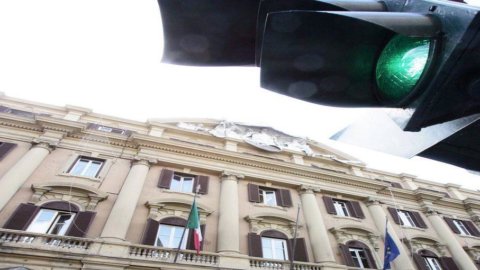Visco against Padoan? It seems, but it's not like that. The apparent contrast arises around the debate (and controversy) on the Italian public debt, which in April reached the peak of 2.194,5 billion euros, marking yet another historical record in absolute terms. The figure, released yesterday by the Bank of Italy in its usual statistical bulletin, seems to contradict the Economy Minister, Pier Carlo Padoan, who has indicated on several occasions that the economic-financial planning has placed the public debt on a downward trajectory. But has a clash really ignited between Via Nazionale and Via XX Settembre? Not actually, why the most important data is not the absolute value of the debt, but the ratio between debt and gross domestic product, which falls if debt is reduced, but also if GDP increases.
To clarify the matter, the Treasury intervened directly, which prominently published a note entitled "Public debt: is it increasing or decreasing?" on the homepage of its website.
The ministry cites the 2015 Economic and Financial Document, in which "it can be noted that the Government's own programming envisages that the debt in absolute value or in monetary terms will grow continuously until 2019, when it should reach a value of 2.218,2, 9 billion euro (table III.60, page XNUMX)".
The same table, continues the Treasury, "however shows the trend in the value of debt in relation to gross domestic product (GDP), which reaches its peak in 2015 (132,5%) and then declines (120% in 2019) ”. Moral of the story, "monetary debt increases, the debt-to-GDP ratio decreases".
At this point the explanation becomes more technical and focuses on various aspects:
1. MONTHLY FLUCTIONS MATTER LITTLE: WE ALREADY KNOW THAT THE ABSOLUTE VALUE OF DEBT WILL GROW UNTIL 2019
"Moreover, the monthly supplements to the Bank of Italy bulletins report the fluctuations relating to the management of borrowing requirements during the year - the note continues -, therefore in the monthly series it is possible to detect months in which the absolute debt falls and then rises again, but the figure expected at the end of the year is still growing compared to December 2014, and at the end of 2016 it will be growing compared to December 2015”, and so on until 2019.
2. AS LONG AS THERE IS A DEFICIT, THE DEBT CAN ONLY RISE
“The increase in debt is obviously linked to the deficit: since the public finances record spending every year that exceeds revenue, the requirement is financed by contracting debt. In the public debate it happens that some commentators who sometimes ask for greater flexibility in public finances, ie an economic planning that produces more deficits, are surprised by the increase in debt. However, the relationship between the two quantities is very clear. As long as there is a requirement to be met to finance the deficit, there is an increase in debt”. A jab to verbal penalty takers such as the economic manager of Fi, Brunetta or the easy populisms of M5S and Lega.
3. ITALY HAS A PRIMARY SURPLUS: NET OF INTEREST ON THE DEBT, THE STATE SPENDS LESS THAN IT RECEIVES
“Finally, it should be remembered that the recent financial deficit planning is not the result of a dissipative logic: the State spends less than it collects, net of interest on the public debt. In 2015 the difference between government revenues and expenditures without taking into account the interest on the debt (the so-called primary surplus) will be positive and equal to 1,7% of GDP. But since the interest on the debt will cost us 4,2% of GDP, the final balance between income and expenditure will be negative and equal to 2,5% of GDP”.
4. THE GOAL OF THE GOVERNMENT IS TO RECONCILE THE PROGRESSIVE REDUCTION OF THE DEFICIT WITH EXPANSIVE MEASURES THAT PROMOTE THE RECOVERY
“The Government has implemented a financial plan that reconciles the need to reduce the debt - through a progressive reduction of the deficit - with the need to encourage recovery, through expansive measures such as the reduction of Irap, the tax bonus of 80 euros for low-income workers, the review of spending to reduce its overall weight and improve the allocation of public resources with the aim of providing better services to citizens. The reduction of the deficit is progressive precisely because the financial planning must take into account the need, in this phase, to support the recovery”, concludes the ministry.





